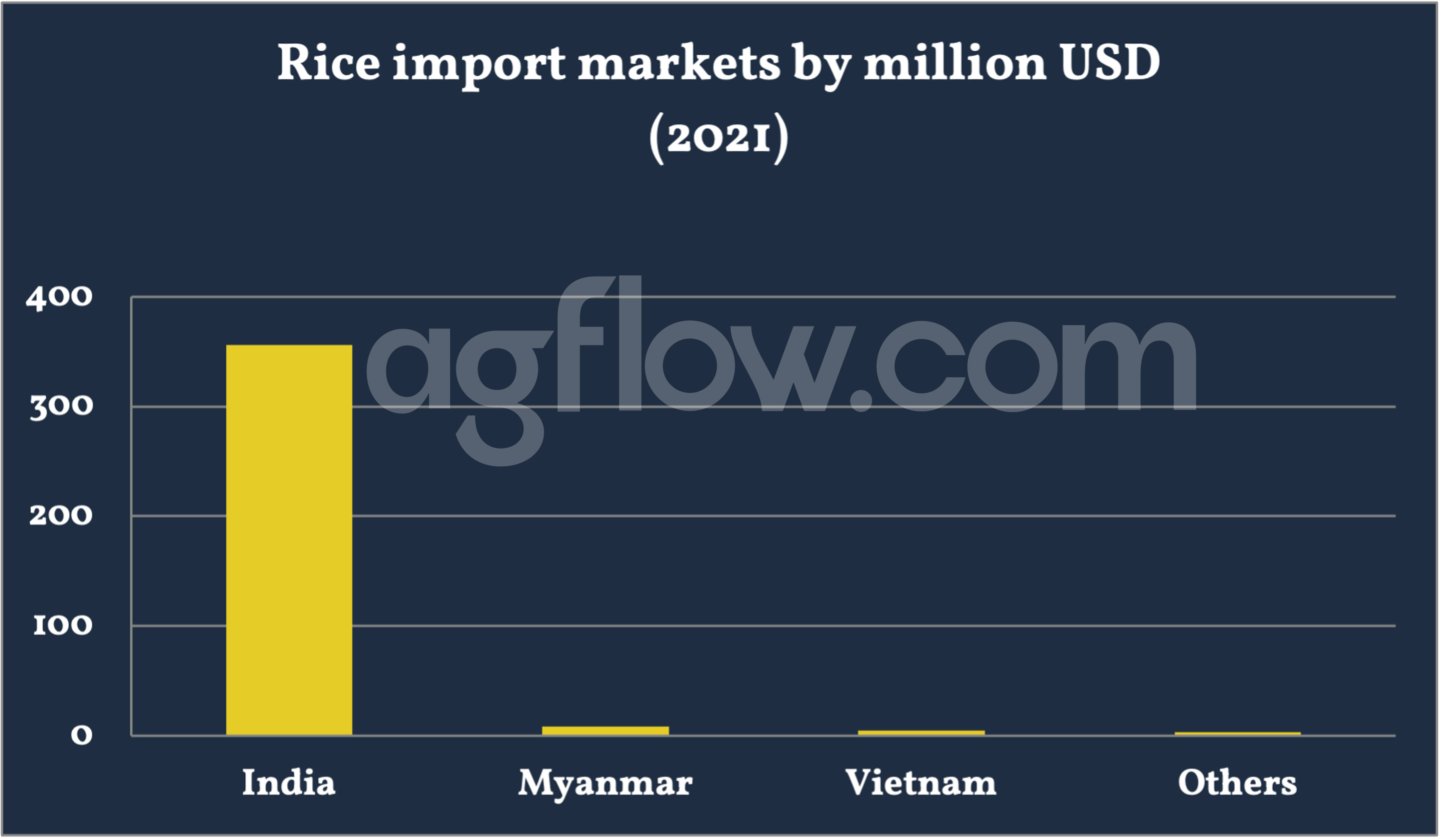The US Dollar Appreciation Challenges Bangladesh Rice Importers
Reading time: 2 minutes
Bangladesh is the 3rd largest Rice-producing country in the world, with a population of 165 million people. According to the FAO report, the country produced 37.4 million tons (milled equivalent) in 2020 and 37.8 million tons in 2021 and is forecast to have 38.4 million tons this year. The country’s Rice cultivation area is around 11 million hectares.
Rice is the staple food of Bangladesh’s population and has a massive demand in the country. Its Rice market is fragmented and segmented by type into Regular Rice and Aromatic Rice. Regular Rice occupies the major share in the Bangladesh Rice market since Aromatic Rice is costly, and the higher economic class mainly prefers it. So, regular Rice is the most preferred by consumers compared to the basmati Rice. Local varieties, such as Kataribhog, Kataktara, Banshful, Bau-pagal, and Nizershail are selected for regular consumption.
The agriculture ministry official said that cultivating high-yielding varieties of paddies must be needed to increase Rice production. The BRI-89 and BRI-92 varieties could yield around one maund of paddy on each decimal of land.
Both the Government and private sector players operate Bangladesh Rice market. The Government is bringing various policies and interventions to achieve self-sufficiency. Under the Public Food-grain Distribution System, the Government distributes Rice both through monetized channels (like the Open Market Sales Program) and through non‐monetized (targeted) channels (such as Food‐for‐Work, the Vulnerable Groups Development Program, and several smaller programs).
Domestic players hold a significant share in the market. The prominent players in the market are Alin, ACI Ltd, Pran, Square Food and Beverages, Ovijat Foods, Agro Organica, Ovijat Foods, among others. The new entrants in the market should mainly focus on increasing their share in the aromatic Rice segment in the country.
Bangladesh has three Rice seasons, the aus, aman, and boro. The aus season Rice crop is planted during March-April and harvested during June-July. The aman The Aman Rice is typically transplanted in June and July and accounts for 40 percent of Bangladesh Rice production.
The USDA predicted that the production of Aman Rice, which will be harvested in November and December, would increase by 1 percent to 1.39 crore tons this year on the assumption of favorable weather conditions, sufficient seed, and fertilizer supply, and continued support from the Department of Agricultural Extension (DAE).
However, farmers in the northern part of the country said less rainfall has already damaged the Aman seed bed. In the last 30 years, the average rainfall in July in Bangladesh has been 496 mm. But, the total rainfall in July this year was only 211 mm – the lowest since 1981.

Bangladesh Rice Import Issues
Bangladesh imported 1.35 million tons of Rice in MY 2021. India, China, and Pakistan are the major exporters to Bangladesh. In the last year, the country imported Rice worth USD356 million from India (96%), followed by Myanmar (USD8.2 million: 2%), Vietnam (USD5 million: 1%), and others. According to the AgFlow data, the country imported 55.3 thousand tons of Rice from India in the last three months.
Currently, Bangladesh faces some importing issues. Many importing firms are not opening LCs (Letters of Credit) even after obtaining permission. Food Ministry Senior Assistant Secretary (Foreign Procurement) Muhammad Mahbubur Rahman said they monitor the imports. The ministry is also extending the LC opening hours.
Importers claim that the main reason for not importing Rice is the increase in the US dollar value. Shahidur Rahman Patwari, Vice president of Bangladesh Auto-Major and Husking Mill Owners Association, said: “Only because of the dollar, the cost per kg has increased by around Tk 20”. So, traders consider that the price of Rice imported in this situation will be higher than the domestically produced Rice.
Free & Unlimited Access In Time

